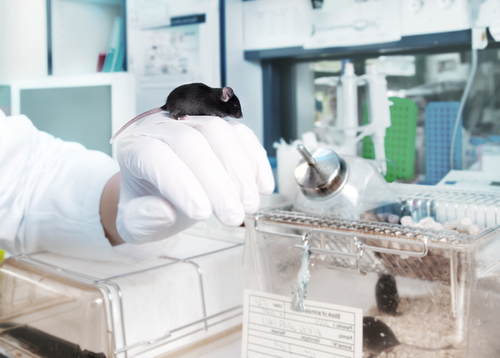Animal Models Help with Studies of Sickle Cell, But More Needed, Review Says
Written by |

The β-hemoglobin gene and protein in humans and mice are similar, which makes a laboratory mouse a very useful partner in studies of β-hemoglobin-related disorders, like sickle cell disease, and possible treatment targets. A review looked at the benefits and shortcomings of animal models of β-hemoglobin diseases, and suggested that the time had come to move “beyond” them.
These diseases, also called β-hemoglobinopathies, are caused by genetic alterations in the β-globin gene. They ultimately lead to the production of abnormal oxygen-carrying hemoglobin (Hb) of red blood cells in the case of sickle cell disease (SCD) or, in the case of β-thalassemia, insufficient β-globin production causing severe anemia.
β-hemoglobinopathies are very complex and our knowledge of them is limited and incomplete. The mouse model has been very helpful in providing new insights into the genetic basis of such human diseases, but improved clinical management of these conditions has been slow.
The review, “Animal models of β-hemoglobinopathies: utility and limitations,” conducted by Bradley McColl and Jim Vadolas from the Murdoch Childrens Research Institute, in Australia, highlighted major developments and some limitations of the genetically modified animal models developed to investigate globin protein expression and β-hemoglobinopathies. The study was published in the Journal of Blood Medicine.
Transgenic mouse models carrying the normal or mutated human gene of β-hemoglobin have allowed scientists to study and better understand the normal regulation of the hemoglobin genes, as well as the grounds in the development of sickle cell disease or β-thalassemia.
Newer animal models of β-hemoglobinopathies have also demonstrated the possibility of using gene therapy for these conditions, and such therapies are now having some success in human clinical trials, the researchers wrote.
But more work is needed to improve patient treatment and care. “Substantive differences in the expression of human and mouse globins during development have also come to light, revealing the limitations of the mouse model, but also providing opportunities to further explore the mechanisms of globin gene regulation,” they said.
“The challenge now is to move beyond the creation of model systems and to identify novel pharmacological and genetic approaches that are suitable for widespread application to the multitude of patients worldwide who are living with the β-hemoglobinopathies,” the researchers concluded.





